Pretty Monarch Butterfly
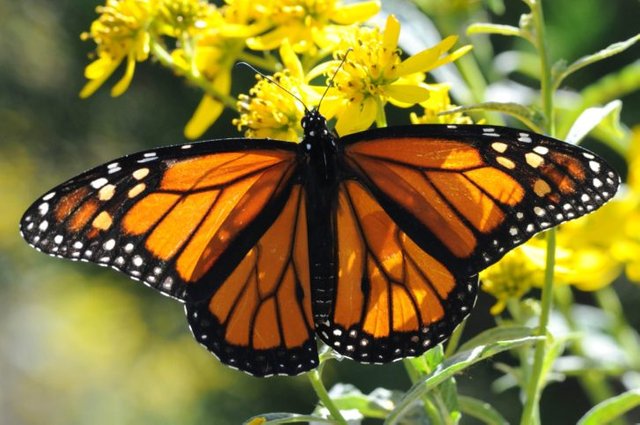
Pixnio: Monarch butterfly
Let me tell you guys about one of my most cherished memories. A few months ago, my girlfriend invited me for lunch in her grandfather's house, I arrived in good time, dressed up so fine, like I was "Mr Right" (Lol!). The welcome was fantastic, as her granddad gave me among the strongest handshakes of my life. How come such an old man could shake my hand so hard, that i felt it? Then I thought to myself, ooh (hahaha), he's trying to intimidate me, you know those father's thing, acting like a hardman (Lol!). But it was still cool, since his facial expression was like " hey young man, nice to finally meet you, we could be friends if you don't mess with my grand daughter and I would deal with you mercilessly, if you break her heart" (Lol!).
On the other hand, her grandmom was so beautiful and full of smiles. Hmm, now I know from whom my girlfriend got her wonderful traits. Then we moved to the dinning table, filled with different foods, well fried chicken, hmmm.., well spiced (wow!), just the way I like it. I was excited with the taste of the foods, the fruits, the red wine and everything. And I started eating, I almost lost control, because the food was so delicious (hmmm), but then I remembered that, hey Starrichie, you never get a second chance to make a good first impression. Hence, I called myself to order and ate like the gentleman that I am (Lol!!), or that I should present myself to be (smiles!).
Wikimedia Commons: Hmm...delicious chicken
Hey guys, I haven't forgotten that this should be a science article, we would get to the science part very soon; before some of you my wonderful readers start whispering in your minds saying- who is this Starrichie guy? Does he think I don't know where to buy a novel? (Lol!!). Don't worry guys, the science part is coming. During the meal, it was as though I was in an interview, I answered questions about my life that I had never thought of before. In all, we all had a wonderful time together, and a wonderful meal as well.
Science lovers, this is where the science part begins, me and my girlfriend went outside to their garden, filled with beautiful flowers, we sat down on a wooden chair, holding ourselves and enjoying the moment. When I noticed the different kinds of lovely looking butterflies flying and landing on different flowers. It was so colorful and I was awestruck, my girlfriend noticed the way I was starring at these beautiful creatures, and instantly she moved as though she learned Kungfu and Tai chi from Jackie Chan himself (Lol!). She caught one of the butterflies, and gave it to me. Honestly, I've always known about butterflies, of course I wasn't born yesterday, but that experience was so beautiful, and it stands as one of my most cherished memories, I still have a vivid mental picture of that moment, and ever since then, it's like my awareness of butterflies have multiplied so many folds.
I really do like these beautiful creatures, and that's why it came to me as a surprise to find out that a kind of butterfly is at risk of extinction. I would discuss further on that later, but for now, let's discuss about the beautiful lives of these pretty insects. Science people, here we go..
Butterflies are very lovely insects that fly with large colorful wings. And just the same as other insects, butterflies have six legs as well, they also have three body parts- the head, the chest (thorax),and the tail (abdomen). Butterflies have four wings. The six legs as well as the four legs are attached to the chest (thorax). There are muscles in the thorax that make that possible. Let's move on to the life cycle of these pretty creatures. Butterflies have four stages in their life cycle. Depending on the kind of butterfly, the life cycle process may take one month to a year.
At stage one, which is the egg stage, the pretty girl butterfly gets to lay eggs. Hence, the life of a butterfly begins as an egg. Butterflies eggs are usually round as well as small and are laid close together. After the eggs are laid, usually there about five days after, a small creature that looks like a worm will hatch from the egg.
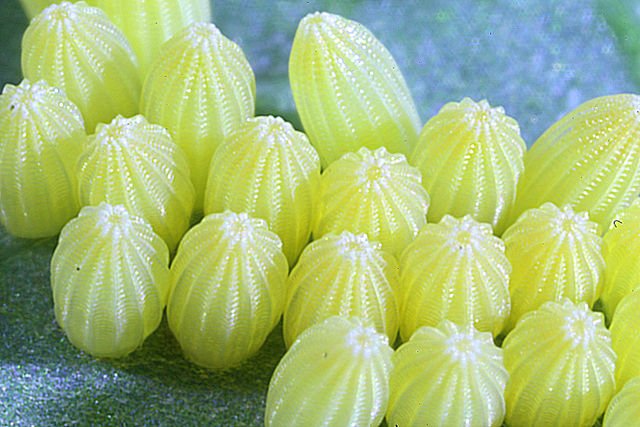
Wikimedia Commons: Eggs of a butterfly
Stage two is the caterpillar stage. Sometimes, you can call a caterpillar a larvae. Caterpillar looks similar to a worm and is long. Usually caterpillars have fine pattern, having some patches or stripes. These guys are usually very hungry from the very instant they are hatched. Caterpillars eat lots of leaves as well as flowers. They eat almost all the time. Imagine guys, caterpillars start by eating the very leaf they were born on (Lol!). Hence, the second stage is the stage for growing and eating. As a result, they grow very fast at this stage. They are usually very small when they are born. Caterpillars grow very fast that they usually become too big for their skin. As a result, they get new skins. They usually grow bigger than their skins four times or more. Hence, they get new skins four times or more as they grow. The shedding of their skin as a result of the fact that they have outgrown it, is called molting. This stage is usually fast, eat, eat, eat, that's all they do at this stage
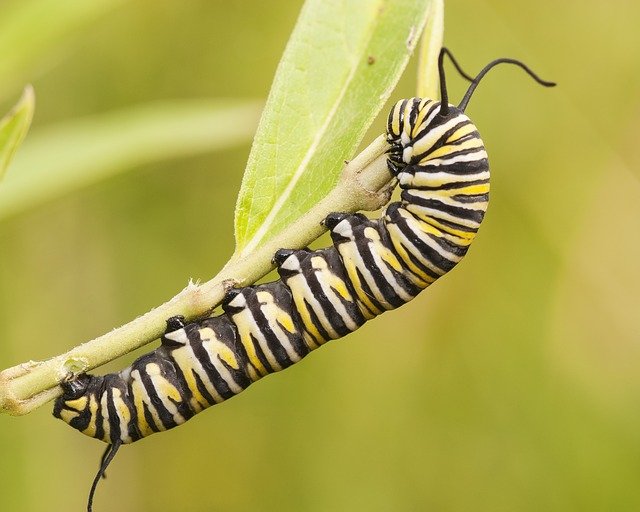
Pixabay: Butterfly caterpillar
Stage three is the chrysalis stage. At this stage, the caterpillar is actually through with growing. It makes a chrysalis. A chrysalis can also be referred to as a pupa. Usually, the pupa (chrysalis) is green or brown. This is so that they can blend with the color of their environment, such as the leaves, trees or the branches. As a result, other animals can hardly see them. Hence, this helps to protect them. The chrysalis stage is the resting stage. Changes start to occur, hence the caterpillar starts to change into a butterfly. This stage is also very fast. The changes occur in the chrysalis. As I just mentioned, this stage is usually very fast.
_Chrysalis%20(2).jpg)
Wikimedia Commons: Butterfly chrysalis
At stage four, this is the stage in which the pupa (chrysalis) gets to open. And before you know what's happening, an adult butterfly comes out (wow!!). Sometimes, a butterfly is referred to as an imago. Hence, this stage can also be called the adult or imago stage. Because the wings are damp when the butterfly first opens the chrysalis, the butterfly rests. When it has rested enough, then it starts to learn to fly. At first, it does not fly well, but then, with lots of practice, it starts to fly well, it actually doesn't take much time for them to learn to fly. By the time it has learned how to fly very well, it then flies out in search of food as well as mate. And once it finds a mate, it then lays eggs again and the life cycle starts again.
Hey guys, butterflies are of different kinds, which includes- monarch, painted lady, viceroy, red-spotted purple, buckeye and zebra longwing.
The monarch butterflies usually have orange and black wings.
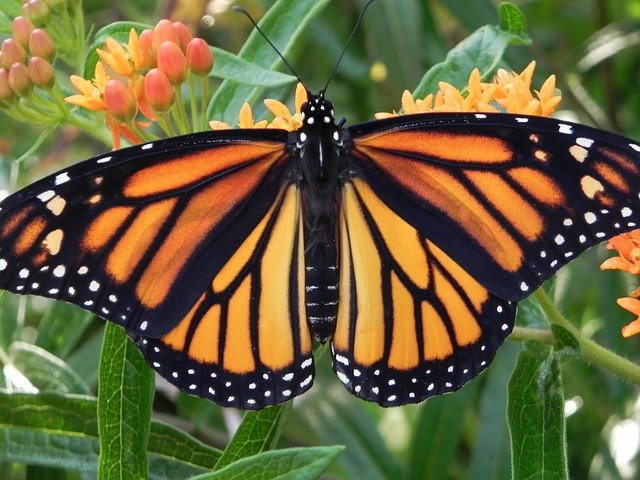
Pixabay: Monarch butterfly
The painted lady butterfly can also be referred to as thistle butterfly. Honestly speaking guys, I really do like the name of this particular kind of butterfly, let's call the name together painted-lady-butterfly (Lol!!). Hahaha, don't mind me, I just like the name, especially the lady part, it makes me laugh!. They usually have orange and brown wings. There's also black and white spots at the tips of the wings.
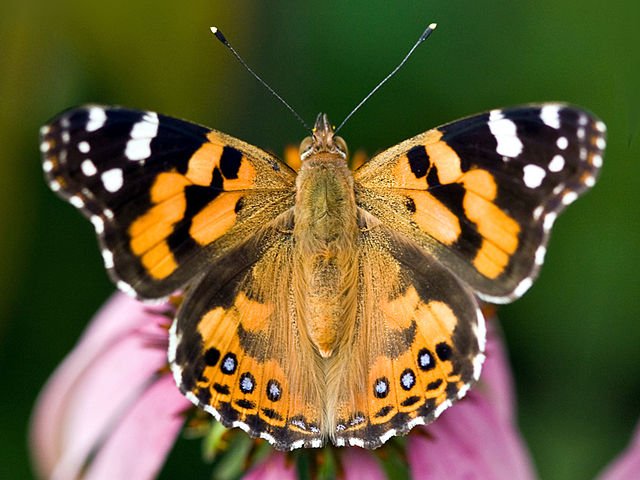
Wikimedia Commons: Painted lady butterfly
The viceroy butterfly looks very similar to the Monarch, the difference between them is that the viceroy butterfly are smaller in size than the monarch. Hence, they have the same color, which is orange and black.
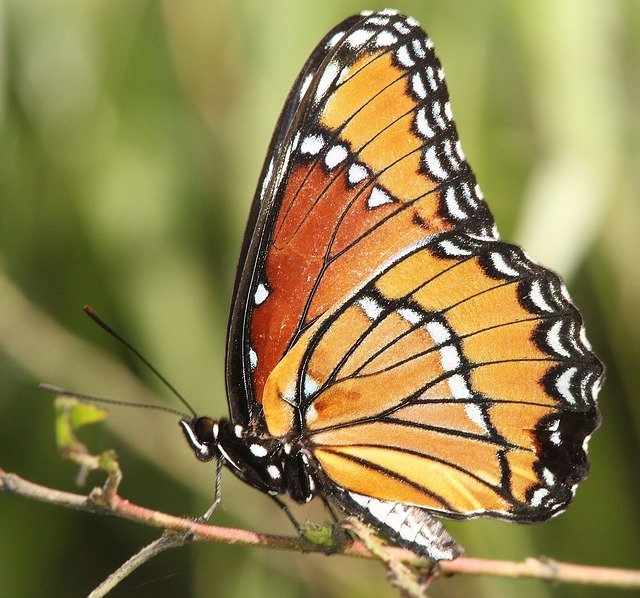
Pixabay: Viceroy butterfly
The red-spotted purple butterfly has many colors. The wings are usually blue at the top. At the top of the wings also, you find red and white dots. And at the bottoms of the wings, they have red and brown color. There's also orange spots. The red-spotted purple butterfly flies really fast. And they are usually resting on rotting fruits. You also see a lot of them in gardens.
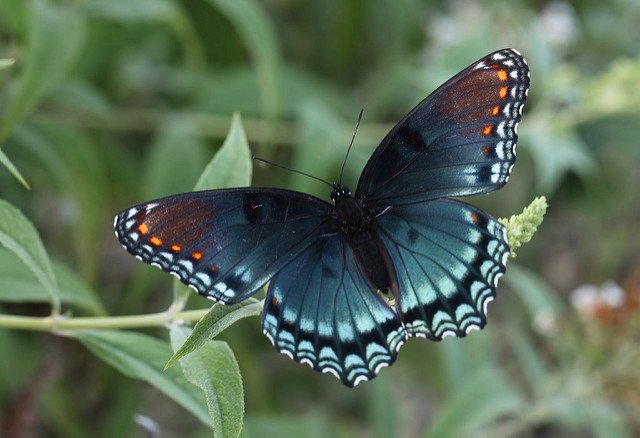
Flickr: Red-spotted purple butterfly
The buckeye butterfly. Hahaha, this one's name sounds funny right?. Let's call the name together, let's go guys buc-ke-ye (Lol!!). They have brown and orange color. Take a look at the wings, they've also got patterns. Those patterns are actually used to put off predators.
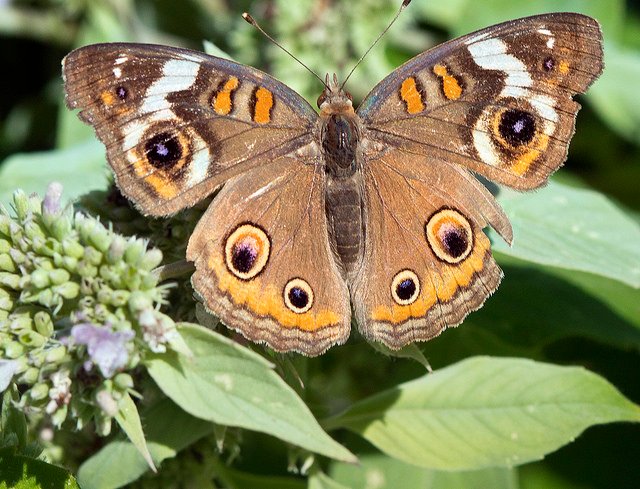
Flickr: Buckeye butterfly
Last but of course not the least, we have the zebra longwing. Now, these guys love warm weather. They usually live longer than the other butterflies. They have white and black colors.
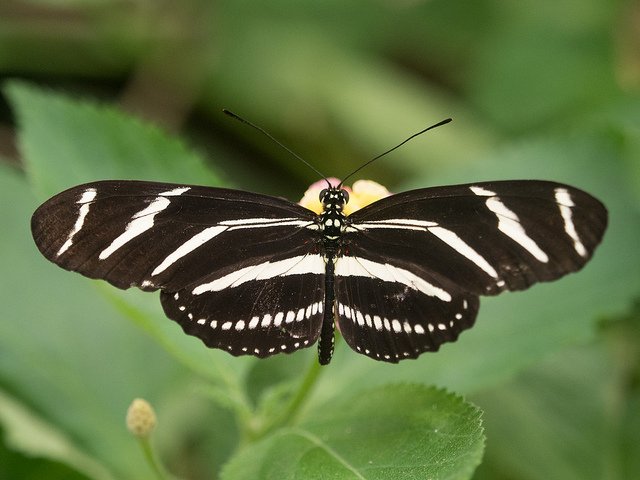
Flickr: Zebra longwing butterfly
Remember, I said that I found out something about butterflies that surprised me, which is that- a particular kind of butterfly is at risk of extinction. Do you guys remember? O yes I know you do. But should in case you don't, you can simply check above. But then, that shouldn't matter now, as I've already said what surprised me already (Lol!). So let's move on guys, where did I stop? Hmmm, hahaha, don't mind me, I'm just joking around. Ok, here's the thing, the Monarch butterflies are been threatened by global warming. Now, you may want to ask me how? Ok, this is it, recent research has found that global warming has been affecting the live of a plant called milkweed. And this plant is the sole food that the monarch butterflies eat. The caterpillar only grows and develops on this plant.
Now, this is what global warming is doing to this plant- naturally, the milkweed plant produces toxic chemicals in their leaves called Cardenolides. These cardenolides put off predators. The monarch butterflies are cardenolide-tolerant, and that's why they eat the milkweed leaves and are not affected. Monarchs lay eggs on these plants, so that when the eggs become caterpillars, predators would avoid eating them, as by eating them, the predator would eat the leaves that they've eaten, that contains cardenolides, which is poisonous to the predators. Hence, remember I said that the Monarchs have an orange and black color, as a result, when predators see butterflies with that color, they avoid eating them.
By laying their eggs on milkweed plants that contain levels of cardenolides that are toxic for their predators, monarchs protect their caterpillar offspring from being eaten. Source
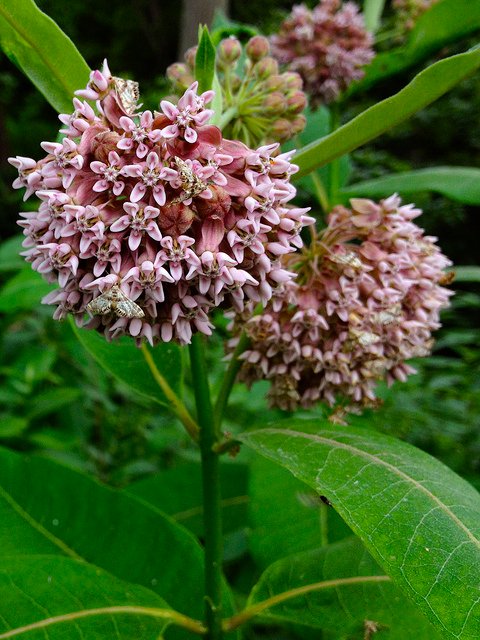
Flickr: Milkweed plant
Also, too much of these toxic chemicals (cardenolides) is poisonous to the monarch butterflies. Now, this is where the problem lies; rise in temperature increases the production of these toxic chemicals in milkweed. And this is how it all relates to global warming. As we all should know, global warming increases the temperature of planet earth, and due to this increase in temperature, milkweed plants have also increased their production of cardenolides, to a level that is poisonous to the monarch butterflies. Just like the case of, too much of a good food becomes bad. This whole rise in temperature and increase in production of cardenolides in milkweed plants have led to the death of many monarch butterflies, as a result of poisoning of their caterpillars, since the milkweed plant is the only food of the caterpillars.
I know that some of you my wonderful readers may probably be saying right now- what do I care if these so called monarch butterflies die off completely? Here's the truth, you should care, because life is all connected, and if these monarch butterflies are dying because of what's happening to milkweed plants, don't you think that in no long time, global warming may start affecting the plants that humans depend on for medicines and food (that's if global warming is not already affecting them). Hence, a particular food or medicinal plant that was good and healthy may start becoming bad and unhealthy for humans. Global warming has to be checked, and that's the truth. We must all come together to make that possible. It really hurts that those pretty monarch butterflies are dying as a result of this.
Thanks for reading!
References
Global warming can turn monarch butterflies' favorite food into poison
Rising carbon dioxide levels pose a previously unrecognized threat to monarch butterflies
Image Sources
All images used here are from free sources and liable for commercial use
all licensed under the Creative Commons.
.JPG)

This post has been upvoted and picked by Daily Picked #56! Thank you for the cool and quality content. Keep going!
Don’t forget I’m not a robot. I explore, read, upvote and share manually 😊
You can upvote, follow, resteem, delegate and join my curation trail to support me, good creators and minnows.
Thank you!
Hi @starrichie!
Your post was upvoted by utopian.io in cooperation with steemstem - supporting knowledge, innovation and technological advancement on the Steem Blockchain.
Contribute to Open Source with utopian.io
Learn how to contribute on our website and join the new open source economy.
Want to chat? Join the Utopian Community on Discord https://discord.gg/h52nFrV